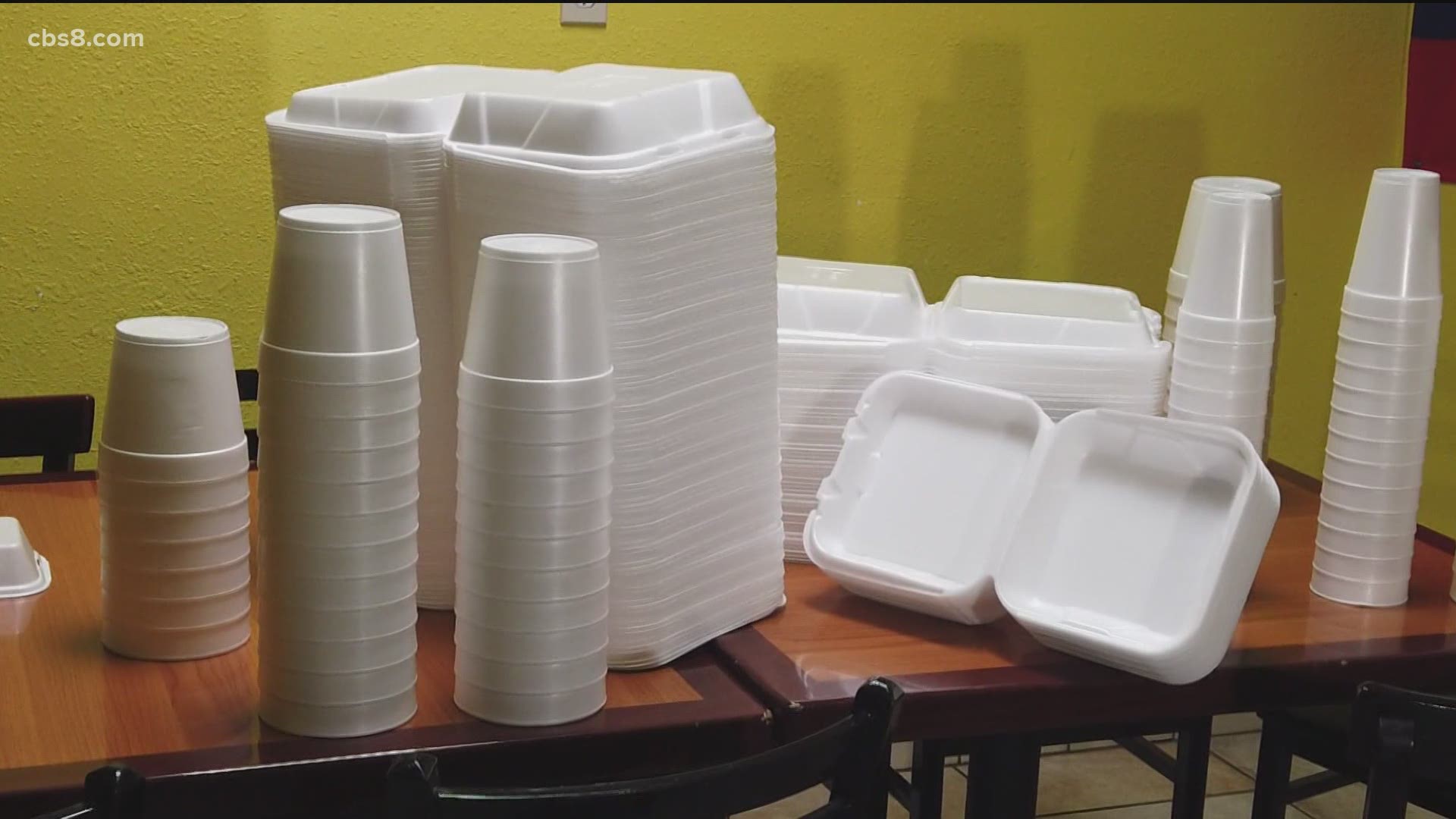SAN DIEGO — What should and should not go into the blue bin? Well, have you heard of wish-cycling? Just because you wish for something to get recycled, doesn’t mean it will be. And if you don’t know, it’s best not to do it because many wish-cycling items can end up contaminating the entire load.
So let’s go over the “don’ts” first.
Plastic bags are one of the biggest contaminators in that it gets caught in the recycling machine.
Ian Monahan with I Love a Clean San Diego said, “first of all refuse plastic bags at every chance you get. They are a pollutant, that’s why they’re banned. Unfortunately, the pandemic brought them back.”
The conveyor belt that sorts recyclables can get clogged with all of the bags and they have to stop the entire process and clear them all out.
That doesn’t mean throw the bags away though, you can go to www.wastefreesd.org for a map of the retailers that’ll take your plastic bags.
Hoses and metal chains are also considered “tanglers” and can bring the system to a halt.
And as Monahan pointed out, many common recycling mistakes include what we get delivered to our homes or businesses.
Most mailers and catalogs, junk mail, even envelopes with that plastic window are fine. But you can’t recycle those fake credit cards that tend to come with our junk mail.
Monahan also said, “plastic mailers with bubble insulation and the bubbles in that packaging… that is not recyclable.”
Cardboard boxes are fine, but please tear the boxes down. You don’t have to take off the tape and labels.
Also, labels on plastic bottles are OK.
And so are caps. But only if you put them back on the bottle.
That’s because anything loose that’s smaller than a credit card can get lost in the process.
That includes all the items you get when you order to-go food.
Plastic spoons, forks, and knives are all too small and will have to go in the trash. That's why it’s best to refuse all of those single-use items all together.
Also, no styrofoam dishes, please.
Leftover food is also a huge recycle-ruiner. If your extra spaghetti or soup ends up in the blue bin, it can soil the entire bin. Monahan says, “if it spills over other cardboard and paper, which is highly recyclable, basically that whole pile would be dumped and thrown away.”
You don’t have to run plastic bottles, glass or cans in the dishwasher before you recycle, but you are asked to shake out the liquid. And, scrape out the peanut butter from those jars.
“You want to get the goodness out of there to eat it anyway. So be sure it’s scraped clean," said Monahan.
Things like greasy cupcakes or pizza boxes are a no-go but Monahan said he will tear the clean top off and recycle that.
Some of you may think anything with a triangle on it is OK to dump. That’s not always the case.
“The triangle was developed by plastic industries to stamp on plastic products," said Monahan.
So no matter the shape on your packaging, that doesn’t necessarily always mean it’s safe to toss in the blue bin. As Monahan said, don’t follow the stamp on the plastic product, follow the city’s recycling guide.
WATCH: Do you know what can and what can't be recycled? We did a demo quiz to show you!

